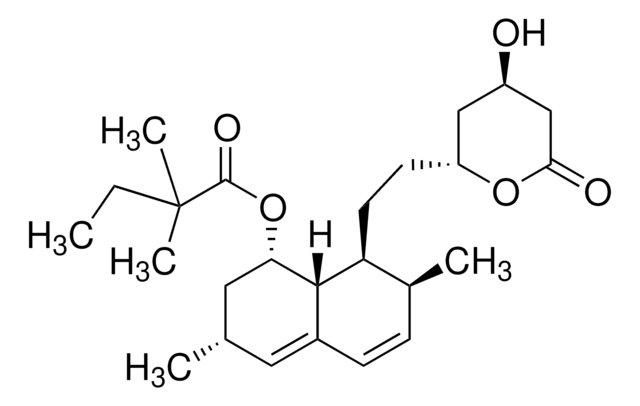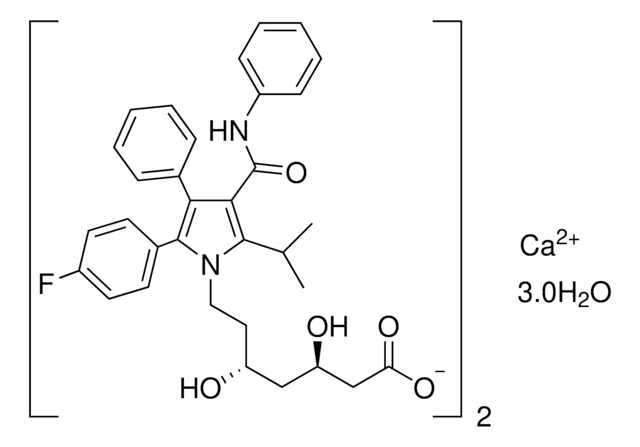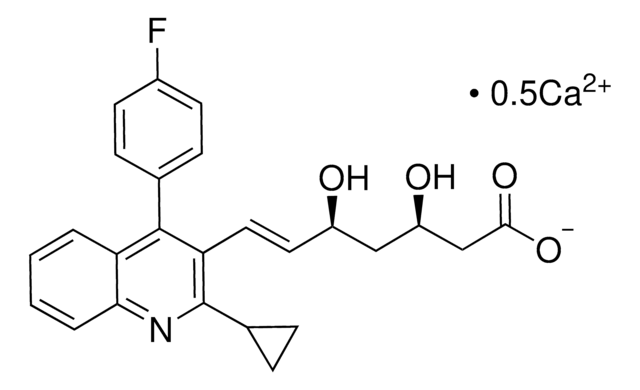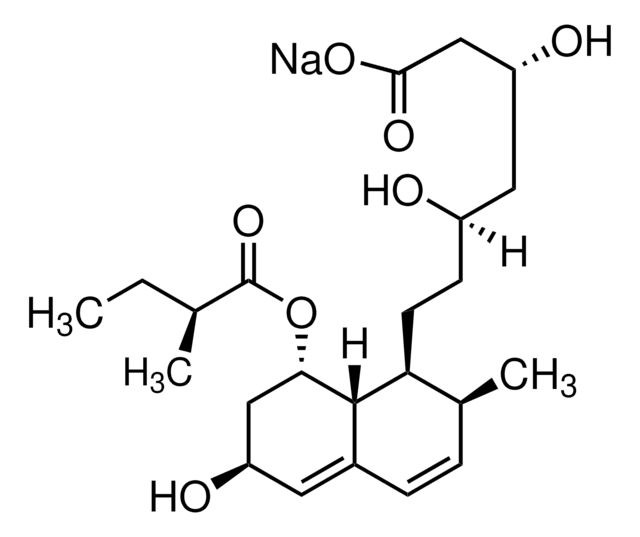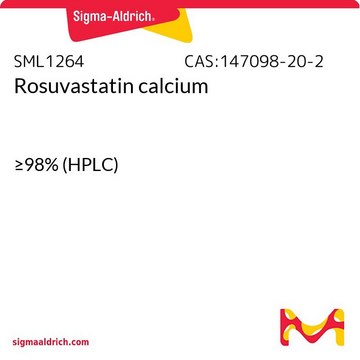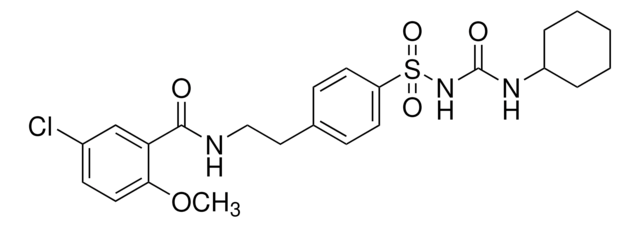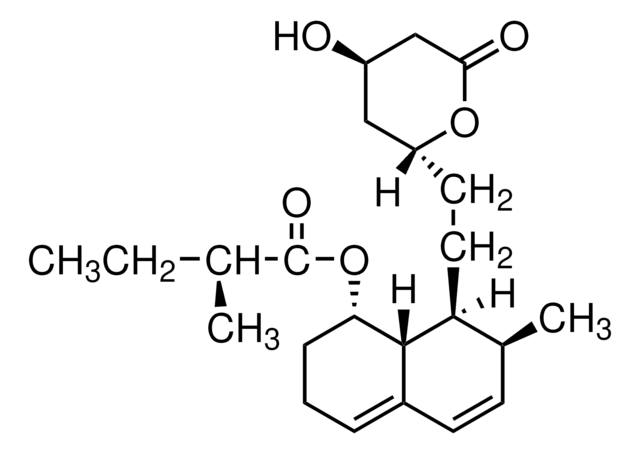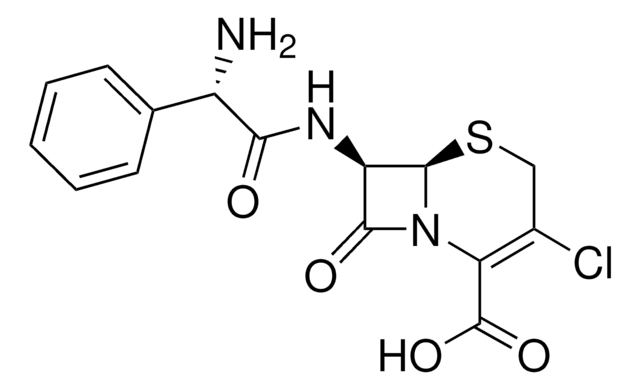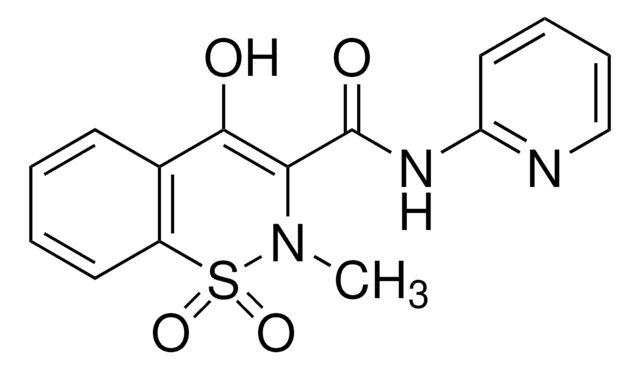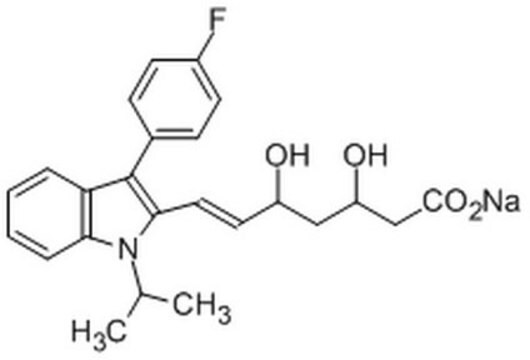SML0038
Fluvastatin sodium hydrate
≥98% (HPLC)
Synonym(s):
(±)-(3R*,5S*,6E)-7-[3-(4-Fluorophenyl)-1-(1-methyethyl)-1H-indol-2-yl]-3,5-dihydroxy-6-heptenoic acid sodium salt hydrate
About This Item
Recommended Products
Quality Level
Assay
≥98% (HPLC)
form
powder
storage condition
desiccated
color
white to tan
solubility
H2O: ≥9 mg/mL
originator
Novartis
storage temp.
2-8°C
SMILES string
O.[Na+].CC(C)n1c(\C=C\[C@@H](O)C[C@@H](O)CC([O-])=O)c(-c2ccc(F)cc2)c3ccccc13
InChI
1S/C24H26FNO4.Na.H2O/c1-15(2)26-21-6-4-3-5-20(21)24(16-7-9-17(25)10-8-16)22(26)12-11-18(27)13-19(28)14-23(29)30;;/h3-12,15,18-19,27-28H,13-14H2,1-2H3,(H,29,30);;1H2/q;+1;/p-1/b12-11+;;/t18-,19-;;/m1../s1
InChI key
KKEMYLLTGGQWCE-PMRANXHDSA-M
Application
- to examine its effect on β -glucan-induced training on immunity
- to investigate the effect of statins on the number of uncoupling protein 1 (UCP1)+ cells
- to determine its effect on insulin degrading enzyme (IDE) secretion from astrocytes
- to treat and study its effect on human umbilical vein endothelial cells (HUVECs) in vitro
- to test its anti-hepatitis C virus (HCV) activity
- as a cholesterol inhibitor
- to study its effects on β-glucan-induced monocyte immune training
Biochem/physiol Actions
Features and Benefits
Storage Class Code
11 - Combustible Solids
WGK
WGK 3
Flash Point(F)
Not applicable
Flash Point(C)
Not applicable
Choose from one of the most recent versions:
Certificates of Analysis (COA)
Don't see the Right Version?
If you require a particular version, you can look up a specific certificate by the Lot or Batch number.
Already Own This Product?
Find documentation for the products that you have recently purchased in the Document Library.
Customers Also Viewed
Articles
Randomized controlled clinical studies have suggested 3-hydroxy-3-methylglutaryl coenzyme A (HMG-CoA) reductase inhibitors (statins) are effective in both primary and secondary prevention of cardiovascular disease (CVD) events.
Our team of scientists has experience in all areas of research including Life Science, Material Science, Chemical Synthesis, Chromatography, Analytical and many others.
Contact Technical Service